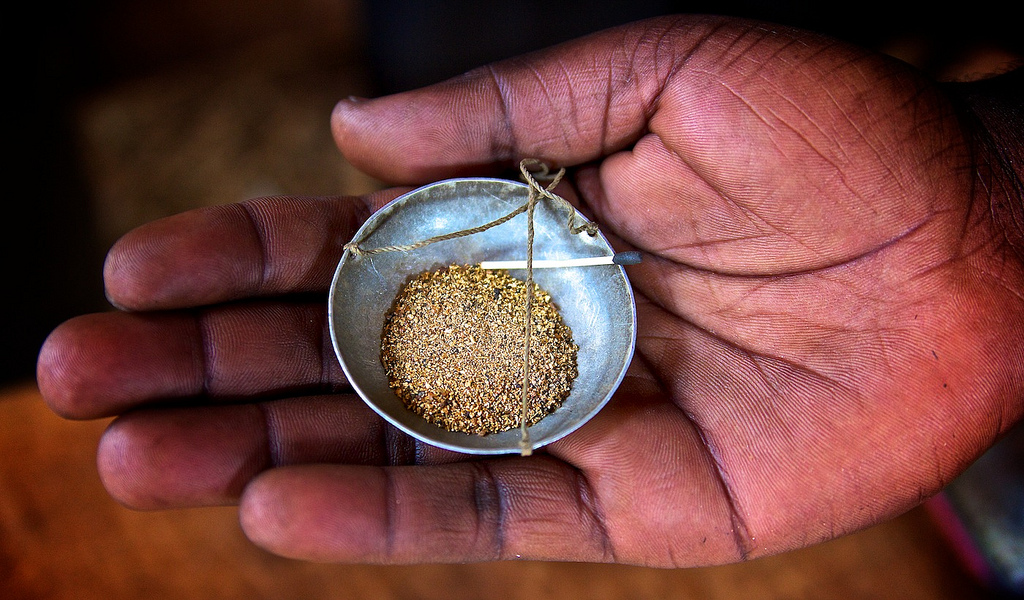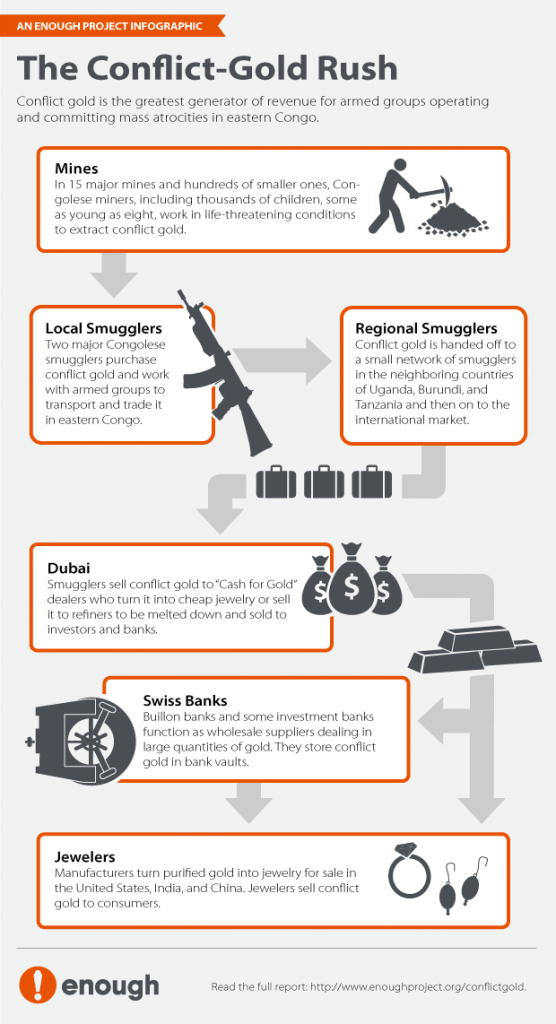
Download the full PDF version
The conflict-gold rush is thriving in eastern Congo. Because of its skyrocketing price and the ease of smuggling it in small pouches for extremely high profits, gold has become the most lucrative conflict mineral for armed groups in eastern Congo. More than $600 million worth of gold is estimated to leave Congo every year, and armed groups are funding their operations through control of a significant percentage of that amount. As U.S. legislation and supply-chain pressure from tech companies have made it more difficult for them to sell the more cumbersome so-called 3-T minerals—tin, tantalum, and tungsten—rebels and army commanders have increasingly turned to gold.


